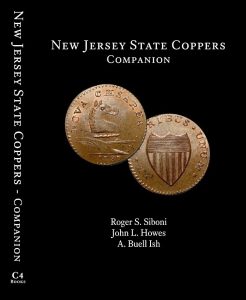
New Jersey State Coppers Companion
By Roger S. Siboni, Jack L. Howes, and A. Buell Ish
Colonial Coin Collectors Club — 2024
|
|

The Identification and Classification of Connecticut Coppers (1785-1788)
by Randall (Randy) P. Clark
The Colonial Coin Collectors Club – 2021
2022 Winner of the Numismatic Literary Guild’s Book of the Year Award
2021 Winner of the Sydney F. Martin Memorial Numismatic Publication Award
With this book, Randy has filled a century long gap in the availability of a concise and thorough study of the Connecticut Coppers series. This is the first book in 100 years to focus solely on Connecticut Coppers, with enough depth, images and technical details to help specialists and casual collectors alike, dive into details of the series.
Beginning with a 128 page historical overview of the series and its collecting history, this book then provides 576 pages of large sized photographs of every die, both obverse and reverse, known as of publication. For collectors of the Connecticut series, this alone is an unbelievable tool. This book now provides collectors with a single source for historical and attribution information which previously had to be cobbled together from myriad sources.
This work represents the 13th book which C4 has partnered with the author(s), to bring to print.
Available at Charles Davis Numismatic Literature.
|
|
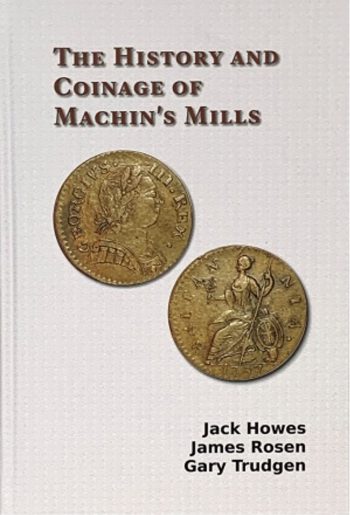
The History and Coinage of Machin’s Mills
by Jack Howes, James Rosen, and Gary Trudgen
The Colonial Coin Collectors Club – 2020
The first book-length study of the intriguing series of coppers issued by various parties associated with Thomas Machin. Includes coverage not only of the series collected as Machin’s Mills coppers, but also of those Vermont, New Jersey, Connecticut and Massachusetts coppers that are linked to this New York operation. This book is a fascinating new publication that fills a long-standing need.
Available at Charles Davis Numismatic Literature.
|
|
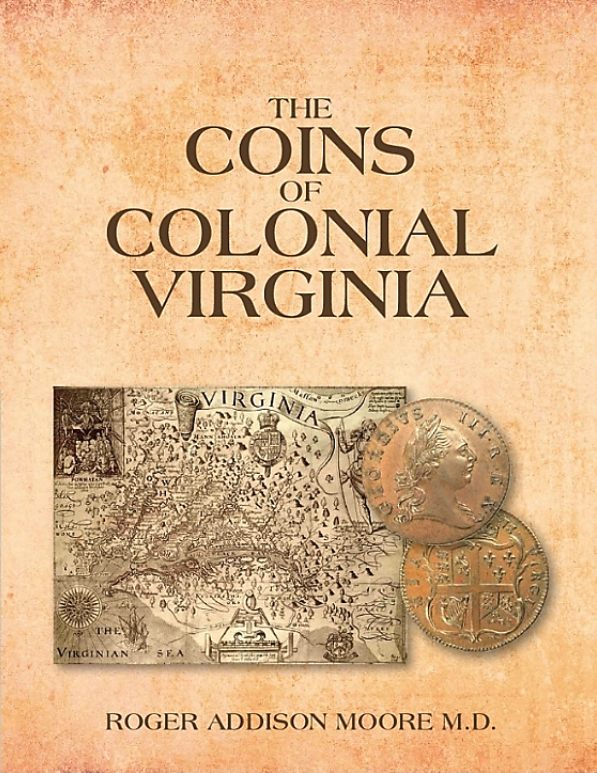
The Coins of Colonial Virginia
by Roger A. Moore
The Colonial Coin Collectors Club – 2019
2022 Winner of the Sydney F. Martin Memorial Numismatic Publication Award
The growth and development of Virginia into one of the most important North American colonies can be traced by the economic evolution of the Dominion State as it attempted to gain the necessary hard currency needed for commerce. The history surrounding the introduction of various coinages and the use of tobacco as a commodity currency over the 150 years leading up to the final authorization of the production of Virginia halfpence in 1773 is fascinating. Equally as absorbing are the twists, turns, and dead ends encountered by the Virginia colonists as they sought authorization from the English Crown for their own coinage. It is ironic that the long-desired copper Virginia halfpence finally provided to Virginia under Warrant from King George III became available to the colonists only fifty days before the beginning of the American Revolution.
In addition to exploring the historic context in which colonial Virginia struggled to obtain hard currency, methods are provided for attributing and collecting 30 known die varieties of the 1773 copper Virginia halfpence. The book also enumerates the specifics of the Virginia halfpence metrology, rarity, and grading, as well as their numerous forgeries, facsimiles, fantasies, and oddities. Virginia halfpence can be appreciated and collected in nearly uncirculated condition and are important additions to any collection of American colonial coins.
Available at Charles Davis Numismatic Literature.
|
|
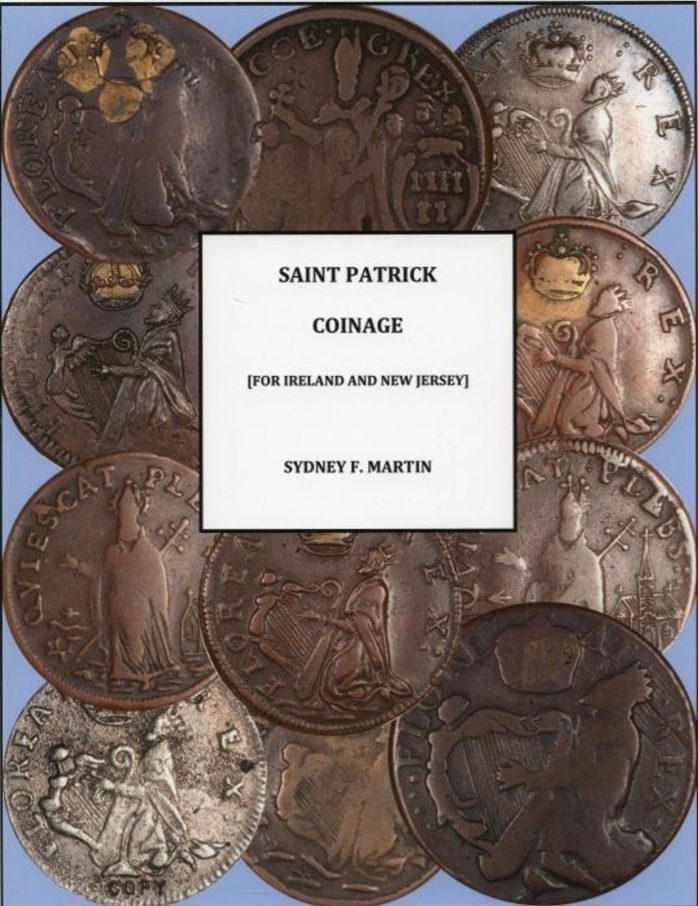
Saint Patrick Coinage (For Ireland and New Jersey)
by Sydney F. Martin
The Colonial Coin Collectors Club – 2018
Syd’s latest work covers a series that has long vexed researchers on both sides of the Atlantic – the St. Patrick coinage. In researching this book Syd traveled to Ireland and spent many hours in the archives in New Jersey in search of clues, discovering some fascinating answers and developing several new theories regarding the coinage.
This coinage has long been shrouded in mystery as to when and where it was made, and for what purpose. Syd discusses the theories that have been proposed so far, and the pros and cons of each plus some exciting new theories of his own.
Available at Charles Davis Numismatic Literature.
|
|
 Contemporary Counterfeit Halfpenny & Farthing Families (2nd printing)
Contemporary Counterfeit Halfpenny & Farthing Families (2nd printing)
by Roger Moore, Eugene Andrews, Robert Bowser, John Howes, John Louis, David Palmer, Jeff Rock, Rickie Rose, Clem Schettino, and Byron Weston
The Colonial Coin Collectors Club – 2018
This monograph is the start of an effort to organize and bring structure to this area of colonial numismatics: it breaks down the vast number of different varieties into related groups called Families. A Family of contemporary counterfeits is a group of coins that likely came from the same minting operation at about the same time. Families are logical groups that share one or more of the following attributes: dies, die-making punches, or similarities in the design style.
This updated large format, glossy, 294-page, and profusely illustrated-in-color hardcover is available from Barnes & Noble, Amazon Books, and other mass market retailers. Check specifically for ISBN-13 978-1642558579.
|
|

French Coinage Specifically For Colonial America
by Sydney F. Martin
The Colonial Coin Collectors Club – 2015
John Kraljevich writes that “With Crosby-like flair, Syd has marshaled together the original documents that tell the stories of these coinages. Most have never been published at all, let alone in English or all in one place. This original research guarantees this work’s importance to researchers in every forthcoming generation.
The heart of this book, the die studies, offers several pathways for collectors to navigate these series, by basic type, by major variety, by die combination, or even by die state. It’s a project that no one has ever even attempted before, an outlier in the world of colonial numismatics, a field that has seen multiple die studies of most of the popular series.
Given Syd’s well-organized approach and the thousands of coins he’s studied, it may be generations before this work is supplanted. It’s doubtful anyone will ever do it any better.”
Read the Press Release.
Available at Charles Davis Numismatic Literature.
|
|
 Abel Buell and the History of the Connecticut and Fugio Coinages
Abel Buell and the History of the Connecticut and Fugio Coinages
by Christopher R. McDowell
The Colonial Coin Collectors Club – 2015
Past writers have portrayed Abel Buell as the single most important figure in Colonial American numismatics. Further details regarding the life and multiple careers of this famous Connecticut Yankee are now available in this new, expanded biography of ‘Our American Genius’ by Christopher R. McDowell. This is an informative read for any enthusiast of the Revolutionary and Pre-federal periods, be their interest in numismatics, economy, metallurgy, printing, or history.
Available at Charles Davis Numismatic Literature.
|
|
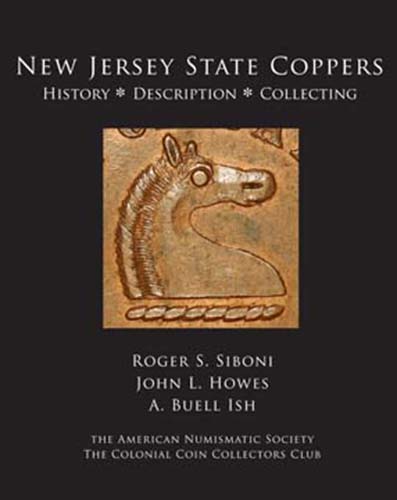
New Jersey State Coppers
Roger S. Siboni, John L. Howes, and A. Buell Ish
American Numismatic Society & The Colonial Coin Collectors Club – 2013
As William Sheldon eloquently put it in Penny Whimsy, “Old copper, like beauty, appears to possess a certain intrinsic quality or charm… [with] an almost living warmth and personality not encountered in any other metal…. You see rich shades of green, red, brown, yellow, and even deep ebony: together not elsewhere matched in nature save perhaps in autumn leaves….”
New Jersey State Coppers shows that never were these words more true than in the case of the coins struck for New Jersey by Thomas Goadsby, Albion Cox, Walter Mould, and Matthias Ogden from 1786 until as late as 1790. By way of introduction, the authors fully discuss the often tumultuous history of the New Jersey copper coinage and its creators alongside the equally compelling story of the men, like Dr. Edward Maris, who first appreciated the “living warmth and personality” of the coins and formed the great collections of the nineteenth and twentieth centuries. Every known New Jersey die variety is presented in minute detail with lavish enlarged full-color illustrations, condition censuses, as well as commentary on die states and other notable features.
Available at Kolbe & Fanning Numismatic Booksellers.
|
|
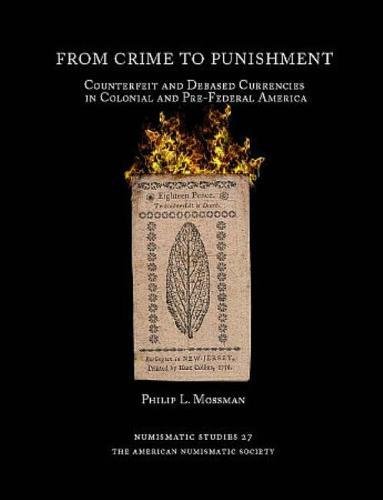
From Crime to Punishment: Counterfeit and Debased Currencies in Colonial and Pre-Federal America
by Philip L. Mossman
American Numismatic Society – 2013
Ever since coinage was developed in ancient Lydia, an element of society has sought to debase the coin of the realm for personal gain not only by counterfeiting but also by shaving away precious metal. Currency debasement was not confined to the proletariat since throughout history various monarchs increased their royal revenues, or seigniorage, by reducing the quality of the coins’ specie content or its weight standard. The current text follows closely the course of royal English copper coinages whose high potential profit made them an ideal prey for counterfeiters. These forgeries flowed freely into the colonies where they overwhelmed, and eventually collapsed, the small change medium but not before various states sought to correct the evil of this imported copper trash.
Great attention is paid to Great Britain’s mercantilistic policies which shaped the character of the currency in the North American colonies where chronic hard money shortages encouraged counterfeit coinages of all stripes whose actual manufacture and circulation is examined in great detail. Colonists further sought to expand their monetary pool by printing bills of credit to meet the exigencies of the French and Indian Wars. This new paper currency likewise became the target for forgery and a battle royal ensued between the colonial treasurers and bands of counterfeiters as they competed to outsmart each other. But as “the weed of crime bears bitter fruit,” many counterfeiters were apprehended and punished for their evil deeds.
Available at Amazon Books.
|
|
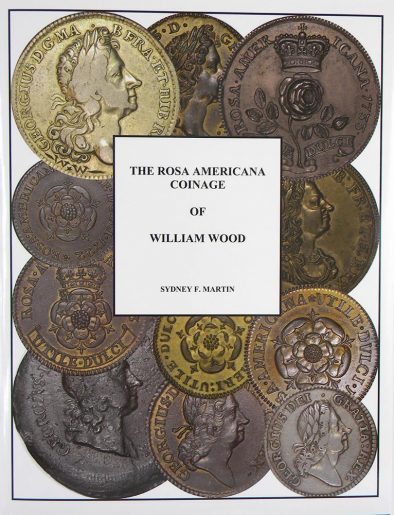 The Rosa Americana Coinage of William Wood
The Rosa Americana Coinage of William Wood
by Sydney F. Martin
The Colonial Coin Collectors Club – 2011
Drawing upon original research the author examines the historical context in which the coins were produced, integrating often conflicting, existing material. Particular attention is paid to the methods employed in manufacturing these coins, from the underlying metallurgy, to preparing and striking the planchets, the locations where they were made, and their circulation patterns.
A catalogue of known die varieties is developed for each of the three de-nominations issued. Some 21 varieties of halfpence, 66 varieties of pence, and 36 varieties of twopence are identified. As well as describing the coins themselves, he has explored related experimental and pattern issues, providing new insights into these enigmatic issues. Production quantities are estimated, rarity and condition census data developed, and major holdings examined.
Available at Charles Davis Numismatic Literature.
|
|
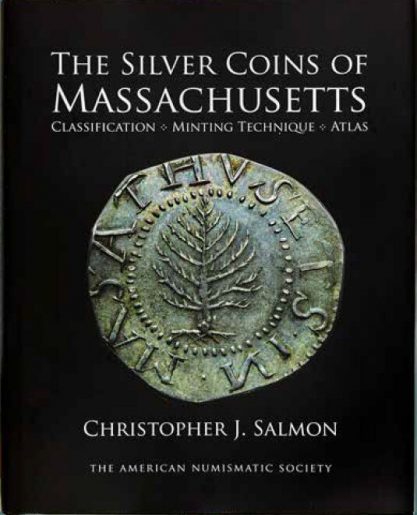 The Silver Coins of Massachusetts
The Silver Coins of Massachusetts
Christopher J. Salmon
American Numismatic Society – 2010
The Silver Coins of Massachusetts is a splendidly illustrated review of these coins, employing the latest historical and numismatic evidence as well as novel scientific analysis. Minting technique is explored in detail. All varieties of the coinage are newly classified with a consistent yet flexible taxonomic system that lists the varieties in chronological order and can readily accommodate potential future discoveries.
The system allows an appreciation for how varieties evolved and the relative degree of change that occurred at each step. It is designed to be as simple as possible without oversimplifying, with all varieties named according to their obverse and reverse dies. The book includes a fully illustrated atlas that details important characteristic features. The last part of the atlas displays each variety at its actual size to aid in attribution.
Available at Amazon Books and other mass retailers under ISBN-13 978-0897223164.
|
|
 In Yankee Doodle’s Pocket
In Yankee Doodle’s Pocket
by Will Nipper
Bowmanstone Press – 2008
In Yankee Doodle’s Pocket: The Myth, Magic and Politics of Money in Early America, offers fresh perspectives on America’s celebrated ascent from disparate colonial outposts to sovereign power. Through the day-to-day instruments of trade and commerce, this work reveals the myriad threads of culture and hidden history that together wove a new nation. Based on years of research, the associated facts, legends, and theories are presented in a conversational narrative that all audiences can read and appreciate.
Available at Amazon Books and other mass retailers under ISBN-13 978-0981663807.
|
|
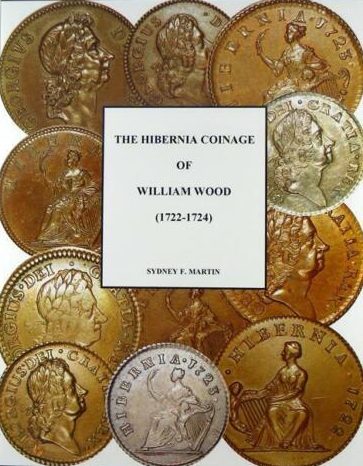
The Hibernia Coinage of William Wood (1722-1724)
by Sydney F. Martin
The Colonial Coin Collectors Club – 2007
The Hibernia Coinage of William Wood represents a major step forward in our understanding of Wood’s failed Irish coinage and provides a model to which all privately published numismatic works should aspire. No doubt it will inspire a much greater interest in the Hibernia coinage than the series has previously tended to enjoy in North America and will serve as a stable foundation for future study. If he were alive today, we can imagine that Swift would be singularly incensed by this worthy attempt to rehabilitate the Hibernia coppers for modern numismatists. Perhaps the book might have elicited an eighth letter from the Drapier.
Available at Charles Davis Numismatic Literature.
|
|
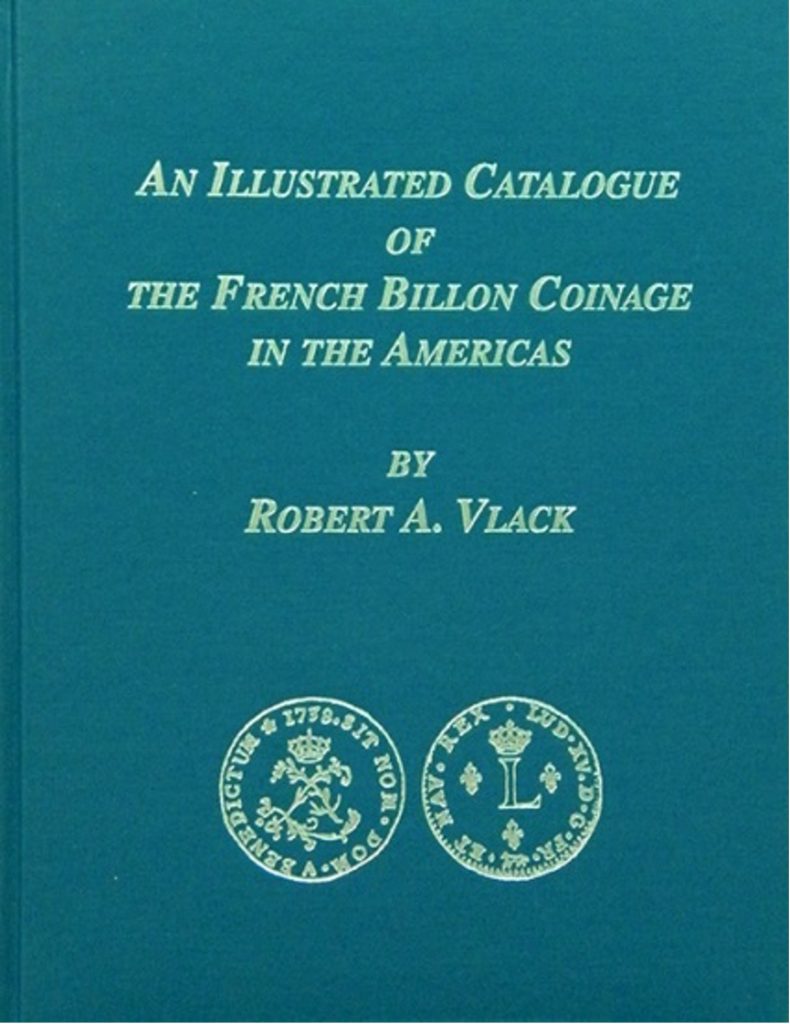 An Illustrated Catalogue Of The French Billon Coinage In The Americas
An Illustrated Catalogue Of The French Billon Coinage In The Americas
by Robert A. Vlack
The Colonial Coin Collectors Club – 2004
An Illustrated Catalogue of the French Billon Coinage in the Americas is an important and long overdue reference for anyone interested in the coins of French North America and the West Indies. Both the author and the Colonial Coin Collectors Club should be congratulated for providing a solid foundation for the further study of French coinage in the New World. Hopefully just as the bold example of Champlain blazed the trail for the colonization of La Nouvelle France four centuries ago, Robert Vlack’s more recent numismatic voyage of discovery will inspire others to take ship and chart new courses in the less traveled waters of North American colonial coinage under the French regime.
Available at Charles Davis Numismatic Literature and Kolbe & Fanning Numismatic Booksellers.
|
|
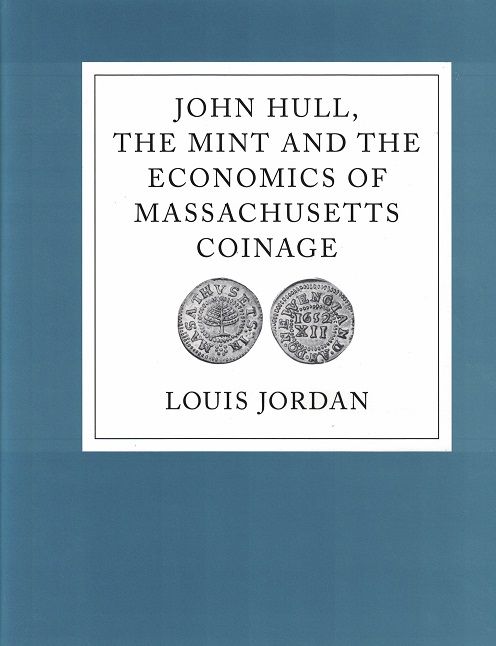 John Hull, the Mint and The Economics of Massachusetts Coinage
John Hull, the Mint and The Economics of Massachusetts Coinage
by Louis Jordan
The Colonial Coin Collectors Club – 2002
In celebration of the 350th anniversary of the opening of the mint, the Colonial Coin Collectors Club published John Hull: the Mint and the Economics of Massachusetts Coinage: an interpretation of original sources, resulting in a comprehensive history of the Massachusetts Mint from its founding in 1652. Using the surviving ledger of John Hull, Louis Jordan discusses production at the mint investigating minting techniques, productivity and the profitability of the enterprise. Jordan also examines the political and economic factors that contributed to the rise and prosperity of the mint as well as the factors that led to its closing.
The book also includes a commentary with illustrations on a discovery first announced by Stack’s in May of 2002 regarding an NE shilling that was overstruck as a Willow Tree of which both the understrike and overstrike represent newly identified reverse dies.
Available at Charles Davis Numismatic Literature.
|
|
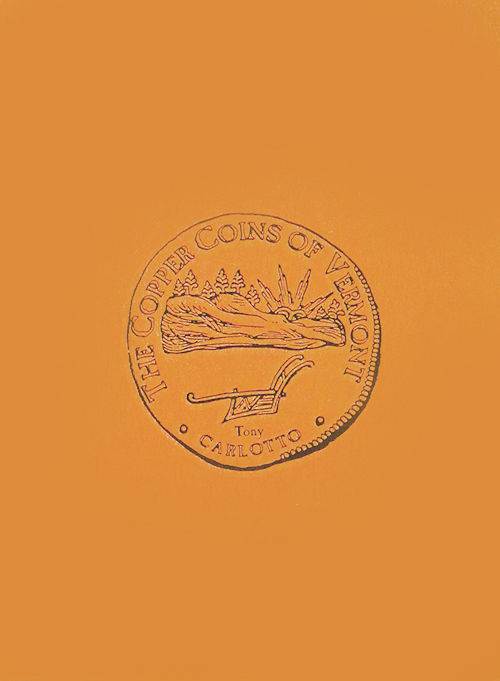 The Copper Coins of Vermont, and Those Bearing the Vermont Name
The Copper Coins of Vermont, and Those Bearing the Vermont Name
by Tony Carlotto
The Colonial Coin Collectors Club – 1998
This was the first book to be published by the Colonial Coin Collectors Club (C4), and a welcome contribution to the study of these enigmatic and charming coins.
Available at Charles Davis Numismatic Literature.
|
|
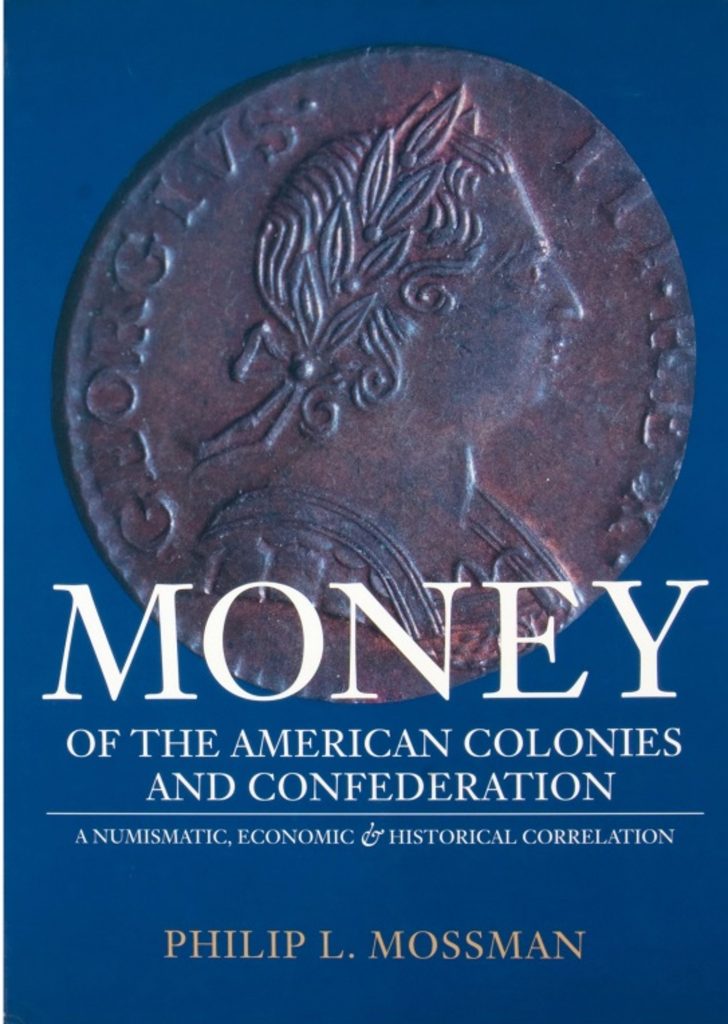
Money of the American Colonies and Confederation
by Philip L. Mossman
American Numismatic Society – 1993
This book is the story of the early currency of British North America prior to the establishment of the Federal Mint. The pervasive theme of this study is that money, in whatever form—be it commodities, wampum, coin or paper—must be understood in the context of a circulating medium of exchange. This holistic approach to numismatics requires an appreciation of the prevailing economic, political, and historical factors which shaped the environment in which the money was current. Without such an awareness, the coinages of this fascinating era are reduced to interesting specimens in collectors’ cabinets rather than active players in the living history of our national tradition.
Available at Amazon Books and other mass retailers under ISBN-13 978-0897222495.
|
|
Editor’s Note: The descriptions given for each book have been gleaned from various internet sources, many of which did not indicate the author’s identity. If the author of any description objects to its use here, please Contact Us and it will be immediately removed.